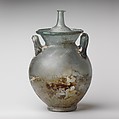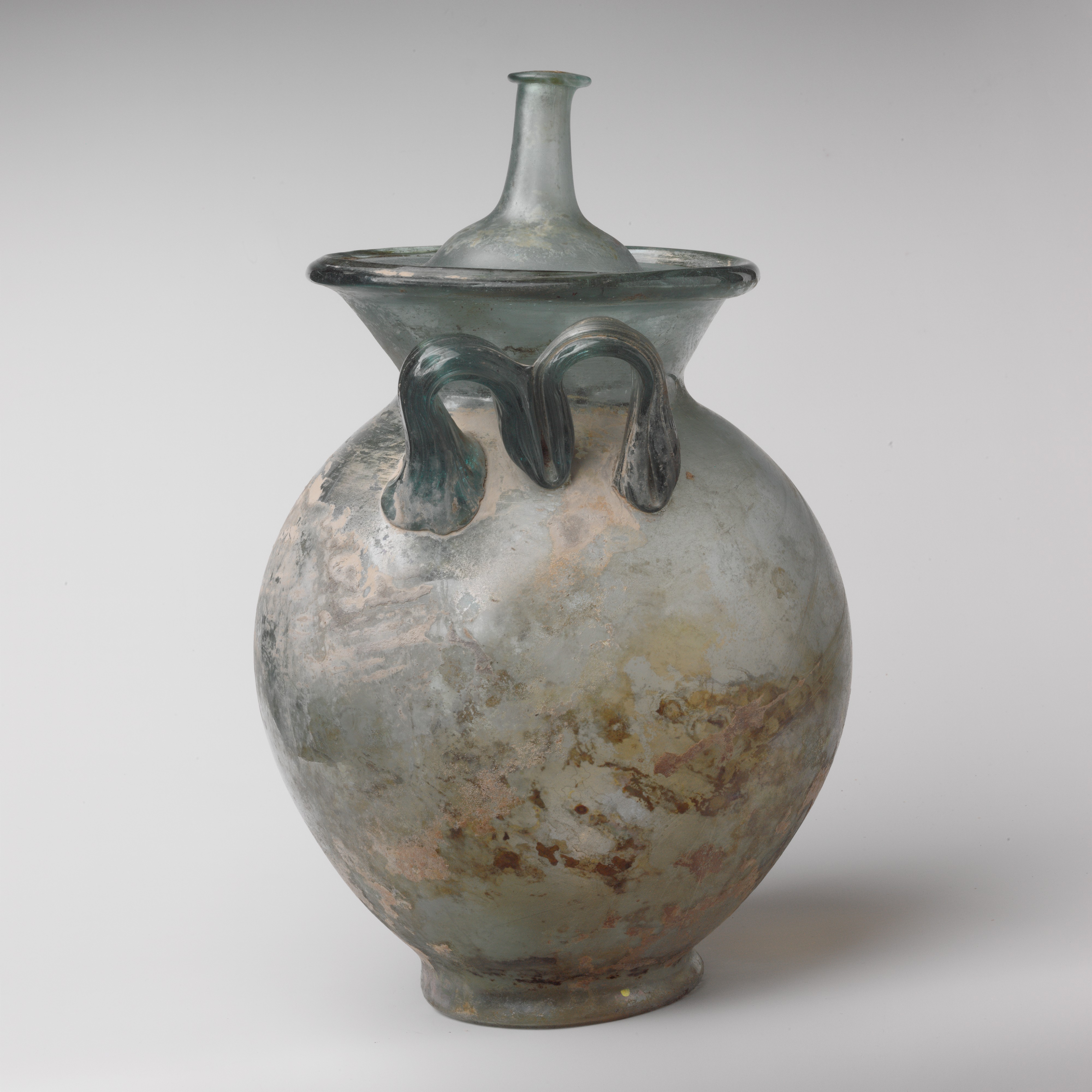Glass cinerary urn with lid
Urn: Translucent blue green; handles in same color.
Everted, angular rim, folded over and in; funnel-shaped neck; ovoid body; splayed hollow foot; shallow concave bottom; two vertical, arched M-shaped handles, attached on opposite sides of upper body, each made of a thick trail, applied as a large circular pad, drawn across body from left to right, and trailed off back along top of handle.
Complete, but cracks around base of one handle; some bubbles; dulling, limy encrustation, pitting, iridescence, and patches of brown weathering on exterior, brilliant iridescent weathering on interior.
Stands unevenly and aslant.
Lid: Translucent blue green.
Slightly outsplayed, downturned rounded rim, with beveled outer edge; outer side concave, then dome-shaped; hollow cylindrical stem; flattened circular knob at top; small, irregular hole in center of knob.
Intact; many pinprick bubbles; dulling, slight pitting, and small patches of iridescent weathering on exterior, patches of soil encrustation and creamy weathering on interior.
The lid is smaller than the rim of the urn but sits neatly on upper side of neck.
Many glass urns are of a similar shape and size, with only minor variations in the forms of their handles and lids. When inverted, the lid on this example also could have served as a funnel. The shape may have been chosen deliberately so that offerings could be poured easily into the urn over the ashes of the deceased.
Due to rights restrictions, this image cannot be enlarged, viewed at full screen, or downloaded.
This artwork is meant to be viewed from right to left. Scroll left to view more.



